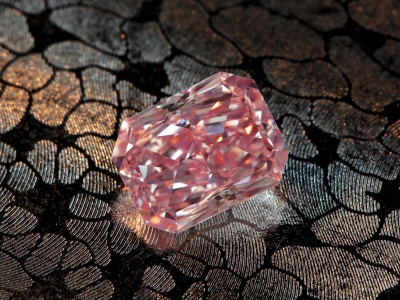In recent years, a new trend has emerged in the diamond industry that is challenging the age-old practices of mining and altering the way consumers view luxury: lab-grown diamonds. With technological advancements making them increasingly accessible and desirable, these man-made diamonds are being hailed as the future of the gemstone market. But what exactly makes them so special, and why are they quickly becoming a preferred choice for environmentally-conscious consumers? Let’s take a closer look at the future of diamonds, and why lab-grown diamonds are poised to redefine the industry.
What Are Lab-Grown Diamonds?
Lab-grown diamonds, also known as synthetic or cultured diamonds, are diamonds that are created in controlled environments using high-pressure, high-temperature (HPHT) or chemical vapor deposition (CVD) methods. These processes replicate the natural conditions under which diamonds form deep within the Earth, making the lab-grown diamonds chemically and physically identical to those mined from the ground.
Despite being man-made, lab-grown diamonds possess the same brilliance, hardness, and sparkle as their natural counterparts. The only difference is their origin – they are produced in a matter of weeks rather than millions of years.
Environmental Impact: The Sustainable Choice
One of the most compelling reasons lab-grown diamonds are being seen as the future of the jewelry industry is their positive environmental impact. Traditional diamond mining has long been associated with environmental degradation, including deforestation, habitat destruction, and the pollution of local water sources. Furthermore, the extraction process is often energy-intensive and generates substantial carbon emissions.
In contrast, lab grown diamonds are the future have a significantly lower environmental footprint. The creation process requires fewer resources and produces fewer harmful byproducts. As awareness about climate change and sustainability grows, consumers are increasingly prioritizing ethical and eco-friendly products. Lab-grown diamonds offer a solution for those who want the beauty of diamonds without contributing to environmental harm.
Ethical Considerations and Transparency
The diamond industry has been marred by ethical concerns for decades, with issues such as “blood diamonds” – diamonds mined in conflict zones where proceeds fund violence – leading to widespread calls for greater transparency. While the industry has made strides in addressing these issues, lab-grown diamonds provide a guaranteed ethical alternative.
Lab-grown diamonds are free from the concerns of exploitation, human rights violations, or conflict funding, as they are produced in a controlled, transparent environment. Consumers can have confidence that their purchase supports ethical practices and does not contribute to any form of exploitation or violence.
Cost Efficiency: More Accessible Luxury
One of the biggest advantages of lab-grown diamonds is their affordability. While natural diamonds can carry a hefty price tag due to their rarity and the costs associated with mining, lab-grown diamonds are typically 20-40% less expensive than their natural counterparts. This price difference allows consumers to purchase larger or higher-quality diamonds for the same budget, providing access to luxury that may have once been out of reach.
For the savvy shopper, lab-grown diamonds represent an opportunity to own a stunning, high-quality gemstone without the premium price. Additionally, the cost-effectiveness of lab-grown diamonds means that consumers are more likely to choose them for a variety of uses beyond engagement rings, including earrings, necklaces, and other fine jewelry.
Technological Advancements and Customization
As technology continues to advance, the production of lab-grown diamonds has become more efficient and precise. These improvements allow for greater customization, enabling consumers to choose from a wider range of shapes, sizes, and colors. Whether you’re seeking a classic round-cut diamond or a unique fancy color, lab-grown diamonds can be tailored to meet individual preferences.
Furthermore, lab-grown diamonds can be created with fewer imperfections, resulting in stones with excellent clarity. As the technology behind their creation becomes more sophisticated, the variety and quality of lab-grown diamonds will only continue to improve, making them an even more attractive option for consumers.
The Growing Popularity of Lab-Grown Diamonds
The market for lab-grown diamonds has been expanding rapidly in recent years. Major jewelry retailers have started to incorporate lab-grown diamonds into their collections, while many new companies have emerged to cater exclusively to this growing demand. The increasing availability of lab-grown diamonds, coupled with their ethical, environmental, and financial benefits, has made them more mainstream and widely accepted.
Celebrities and influencers have also helped propel the popularity of lab diamonds by embracing them in their own engagements and public appearances. As these diamonds become more common in the media, consumers are increasingly recognizing that they offer a legitimate and high-quality alternative to mined diamonds.
The Future Outlook
As lab-grown diamonds continue to gain traction in the marketplace, it’s clear that they are not a passing trend, but rather a transformative force in the jewelry industry. With their environmentally friendly production, ethical sourcing, cost-effectiveness, and growing consumer acceptance, lab-grown diamonds represent the future of the diamond industry.
As the technology behind their creation improves, the cost continues to decrease, and more people seek sustainable luxury options, lab-grown diamonds are poised to take over the market. They provide a beautiful, ethical, and accessible alternative to natural diamonds, aligning with the values of modern consumers who are increasingly concerned about environmental sustainability and social responsibility.




